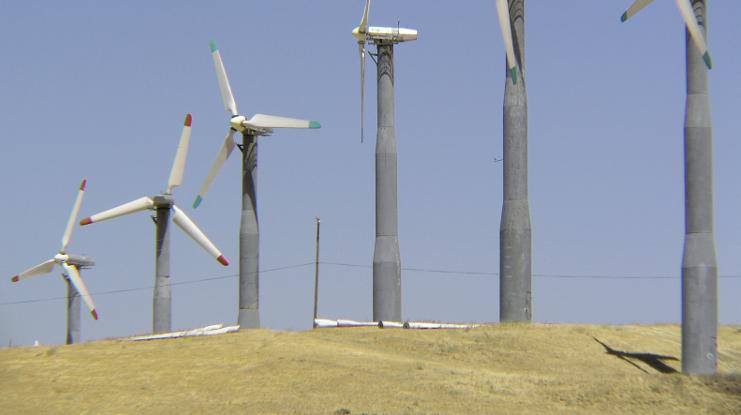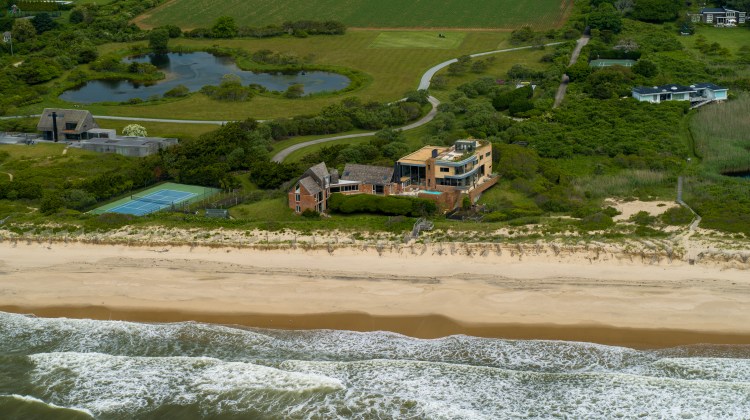Gov. Andrew Cuomo’s proposed energy plan came under fire Monday at a public hearing in Farmingdale from environmental activists who say the draft they’ve seen of his proposal doesn’t go far enough toward reducing climate change and lessening our dependence on dirty fossil fuels—and may actually do more harm than good.
“Though it calls for reductions in greenhouse gas emissions, it conversely includes a greater reliance on natural gas obtained through fracking, a dangerous and destructive method that contributes to climate change,” said Eric Weltman, senior organizer with Food & Water Watch, a nonprofit environmental group based in Brooklyn.
Weighing on activists’ concerns is the fate of the natural gas-rich Marcellus Shale deposit upstate, which has become the latest front in the battle over fracking. So far, Cuomo has put off making a decision on whether to allow industry to gain access to this resource, in part because environmentalists argue that fracking could pollute New York’s fresh water supply for generations to come.
Held in Roosevelt Hall on the campus of SUNY Farmingdale College, the hearing on the New York State Energy Plan was one of six that the State Energy Planning Board, comprised of appointees picked by the governor, the state Senate and the Assembly, has been conducting around the state. The public comment period concludes on April 30.
About 70 people attended the hearing chaired by John B. Rhodes, the head of the New York State Energy Research and Development Authority, and more than three dozen testified, including representatives from the Citizens Campaign for the Environment, the Sustainability Institute at Molloy College, MoveOn.org, the Sane Energy Project, Renewable Energy Long Island and the Sierra Club, to name a few.
Cuomo has said that he wants New York to cut greenhouse gas emissions 80 percent by the year 2050 from 1990 levels—and achieve a 50 percent cut by 2030. Critics of the proposal, who were on hand at the public hearing, applaud the idea but point out that the interim step only pertains to carbon dioxide “whereas the 2050 goal properly applies to all greenhouse gas pollutants,” according to Food & Water Watch’s Weltman.
Methane, a byproduct of fracking, is 86 times more potent to global warming than carbon dioxide over a 20-year time frame and 34 times more destructive over a century, he says, citing figures from the Intergovernmental Panel on Climate Change, a global scientific organization set up the United Nations.
“We can’t frack and burn our way to healthier communities and a cleaner environment,” said Jessica Reid, regional campus supervisor for the New York Public Interest Research Group.
“The plan as it stands clearly supports expanded fossil fuel infrastructure,” says David Alicea, an organizer with the Sierra Club. “If the governor is serious about acting on climate change, he must reject any new fossil fuel infrastructure and direct our resources to renewable energy, like wind. Further investments in fossil fuel will only lock us into a dirty energy future when we could be making investments this year on offshore wind.”
His group is among those hoping the governor will commit the state to purchasing power from a wind project slated for east of Montauk and move forward on a proposal to build a site many miles off Long Beach.
“The Sierra Club and others really think that properly sited wind power is the best way we can address the issues of climate change,” Alicea said. “The projects proposed right now are new, second-generation wind, unlike past proposals. That means they are further out, produce more power, and have less of an impact on wildlife.”
Roger Clayman, executive director of the Long Island Federation of Labor, said that making investments in offshore wind energy now would reap economic benefits in the future.
“By planning now for the transmission and generation of offshore wind energy, New York can be sure that this great resource will provide reliable clean energy to the public and substantial job opportunities for decades,” Clayman said.
“We recognize the necessity of developing wind and solar power as well as rebuilding the electrical grid,” Clayman said. “Utilizing American-made steel and glass and manufacturing wind turbines in this country could produce hundreds of thousands of jobs.”
Clayman said that in the United Kingdom, which started building its offshore wind industry in 2001, thousands of people are already employed and 45,000 more are estimated to be working on wind power in the UK over the next decade.
“We believe Long Island is ideally placed to become a hub for offshore wind development considering its geography, access to skilled trades, manufacturing and the potential to develop port facilities,” Clayman testified.
What Cuomo thinks the Island’s energy future shall be remains to be seen. But as Superstorm Sandy showed, LI is already reeling from the long-term effects of climate change.

































